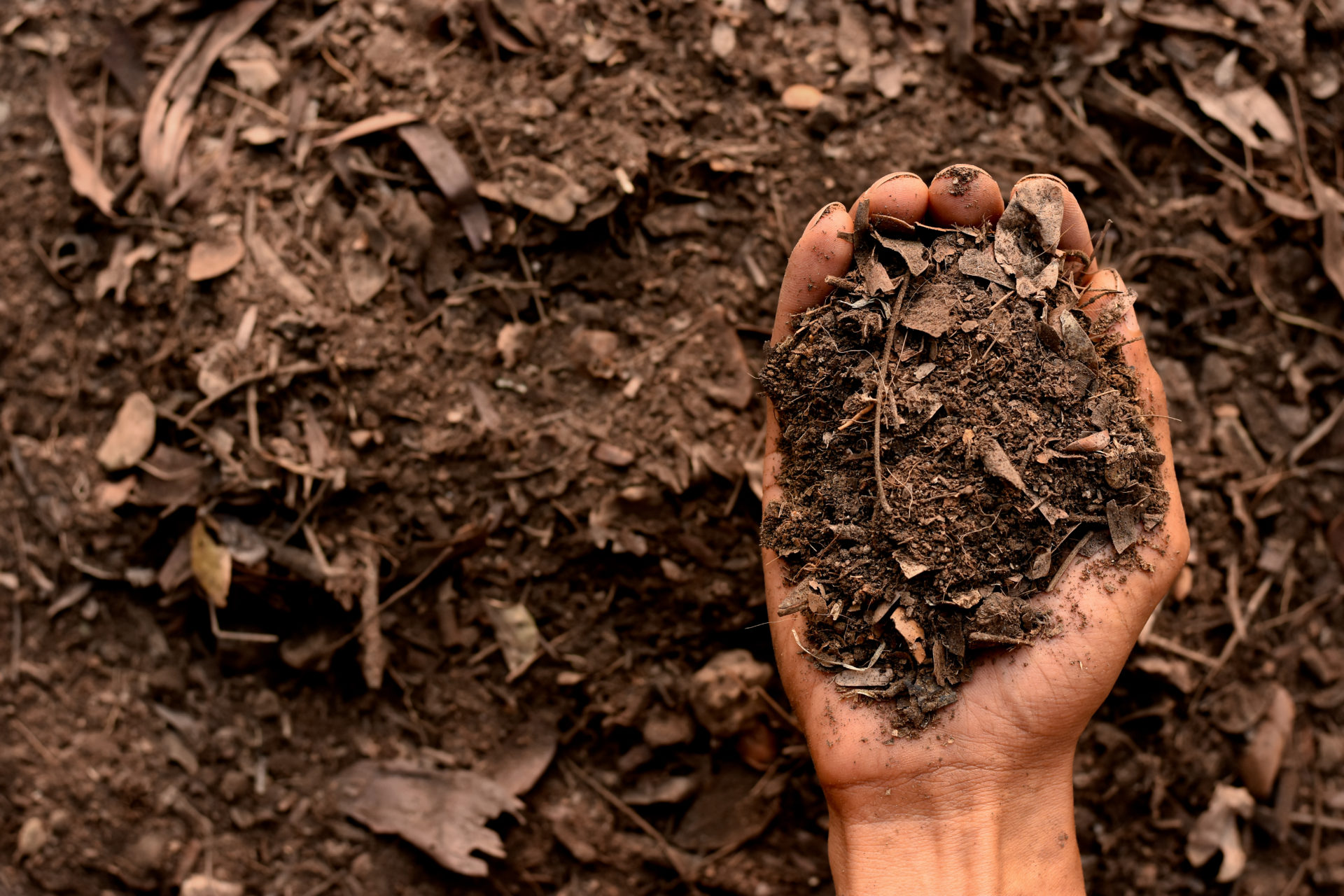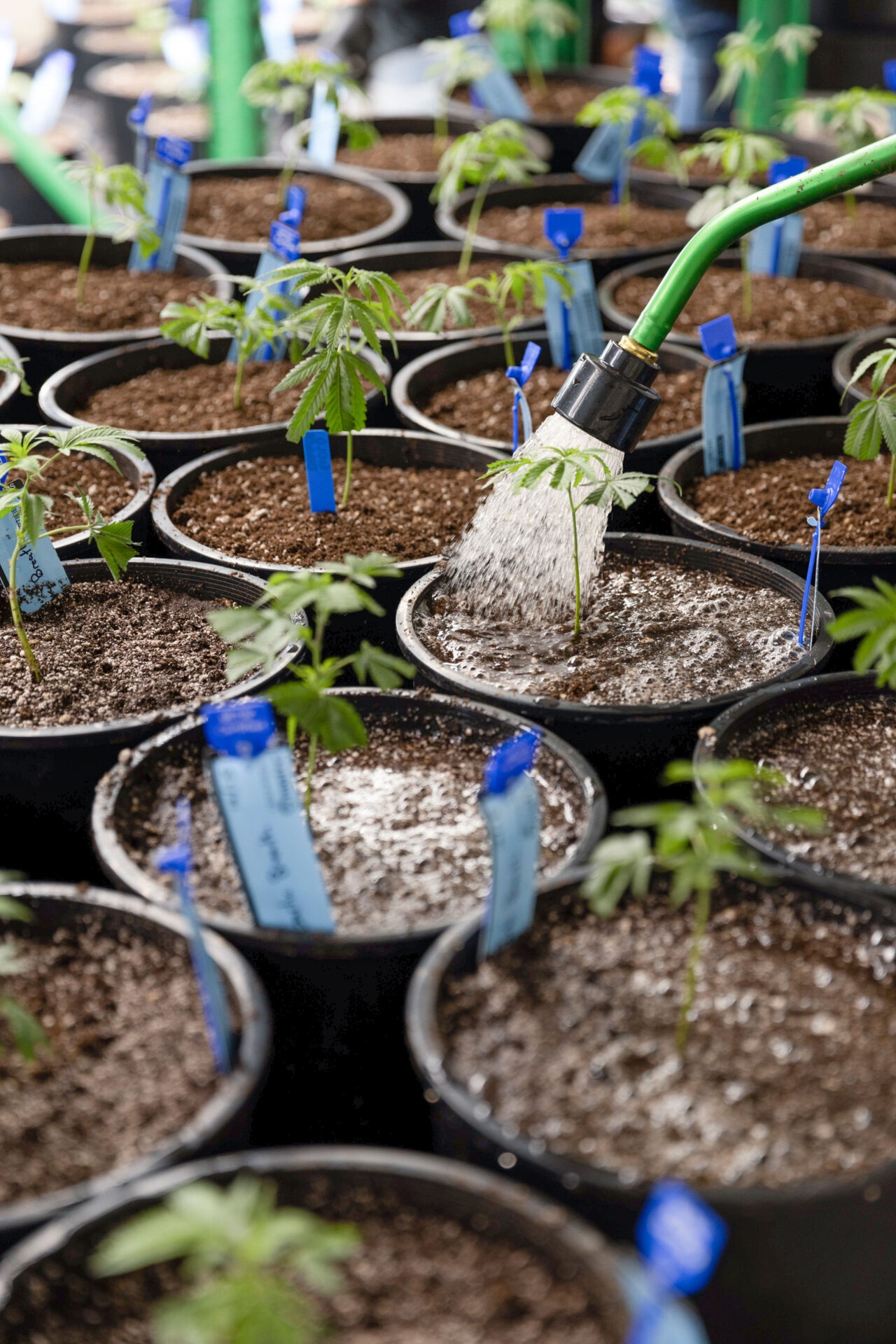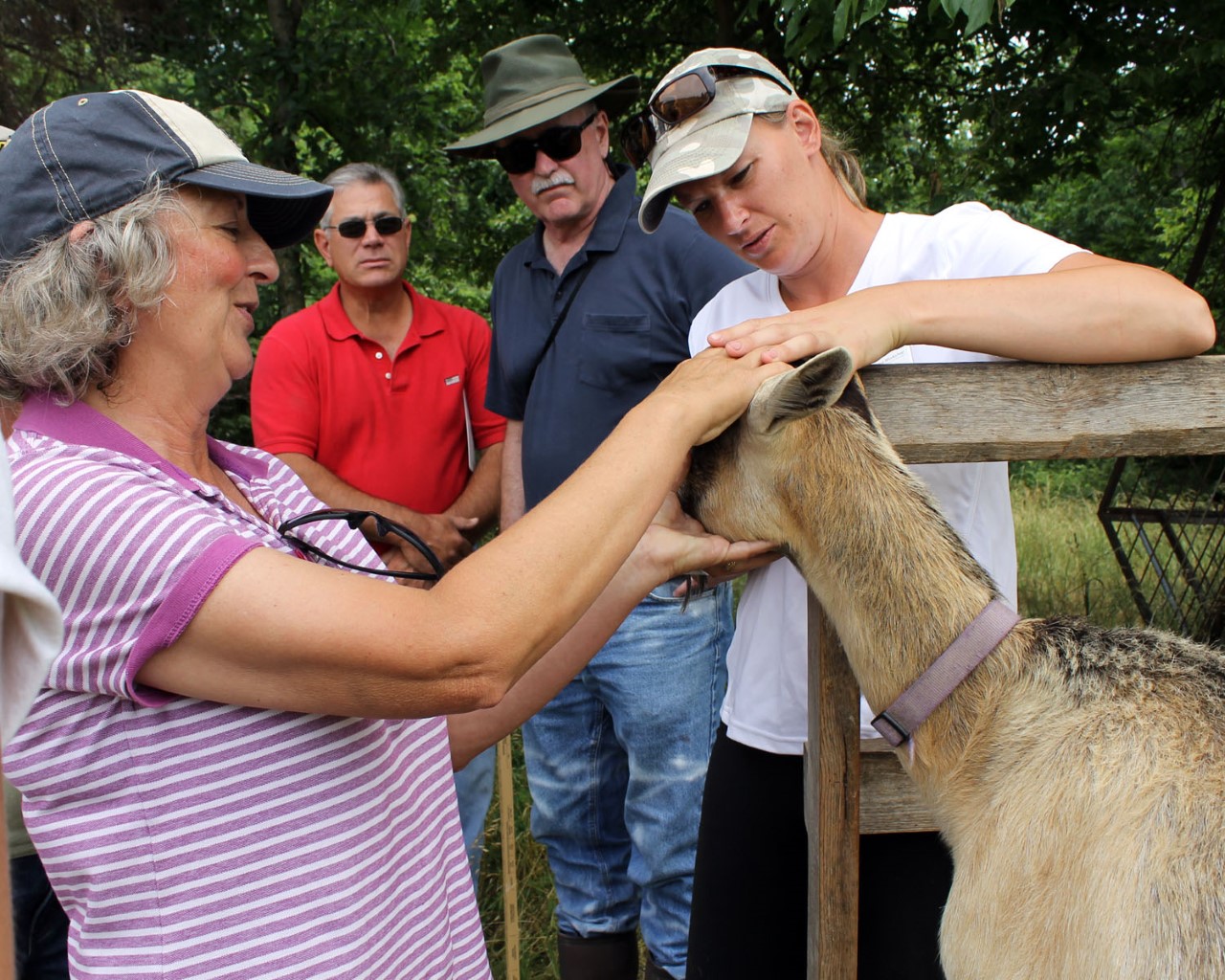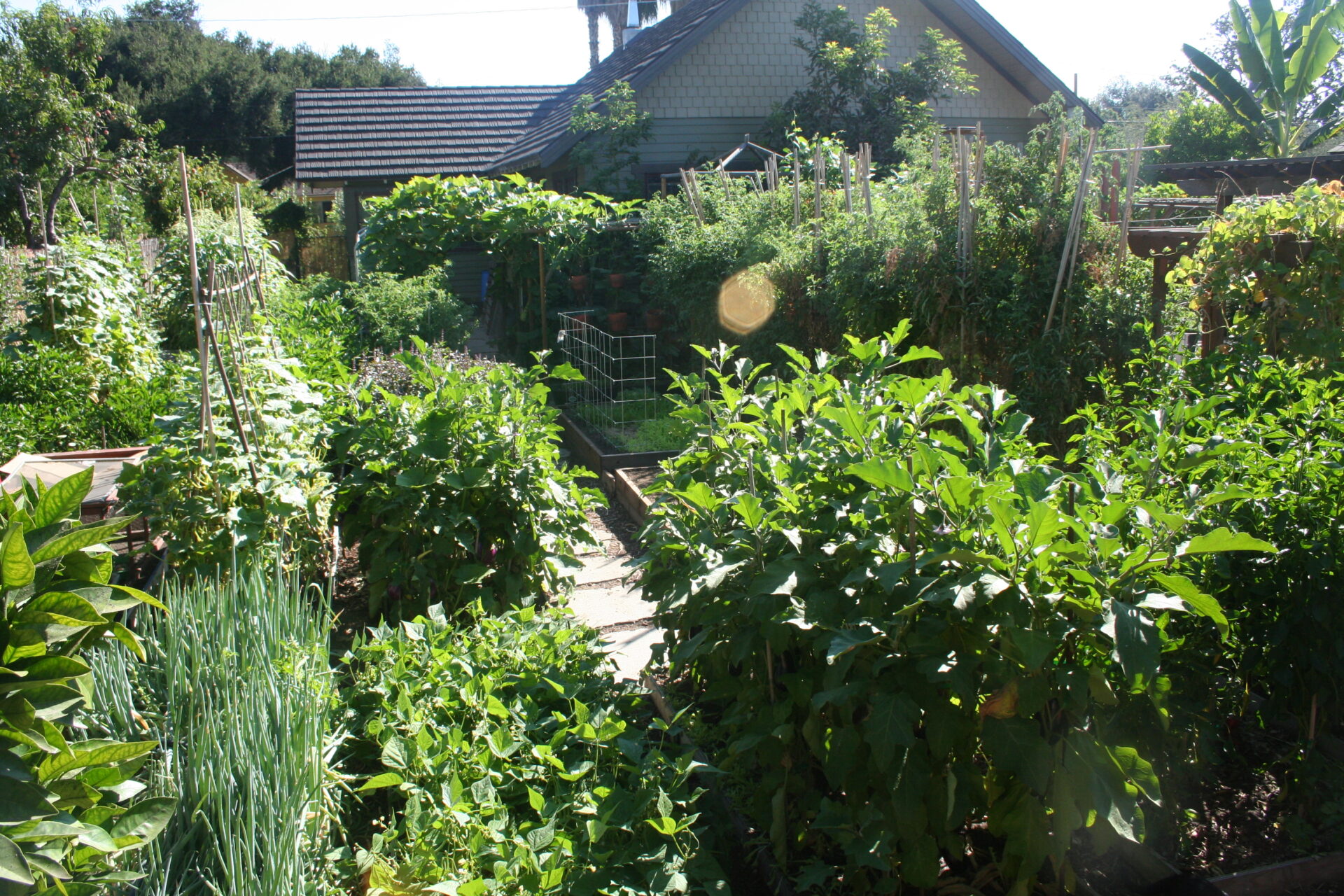Few soils in the world tend to have the correct amount of magnesium for providing the highest yields and the highest nutritional value. Crops need adequate magnesium to sufficiently utilize both nitrogen and phosphate. Along with potassium, it also helps against frost resistance.
Areas with sandy soils tend to have the greatest problem with levels that are too low in needed magnesium. Yet, there are specific regions based on detailed testing for magnesium availability that do not have characteristics that would be considered sandy soils that also prove to have severe magnesium deficiencies for growing plants and crops. Far more soils used to produce food throughout the world have a high magnesium content, and yet the crops are lacking the magnesium they require for the best performance and highest nutritional values.
Why is this problem being overlooked even by organic growers? How can it be verified? And what can individual growers do to determine and remedy magnesium deficiency in food and feed crops?
If or when soil needs magnesium, how much is enough and how much is too much? And how can you know? This second in a two-part series will further explore the role of magnesium in improving crops and yields.
Magnesium in Soils
In the first article about soil magnesium printed in June/July 2020 Organic Farmer, the example of magnesium deficiency in carrots was discussed. When the soil does not have enough magnesium, carrots serve as an excellent indicator crop to tell at exactly what point soils are magnesium deficient. Carrots consistently show the accuracy of a soil test for predicting precisely when there is or is not a magnesium deficiency in the soil where they are growing. Based upon responses right in the field, an accurate test will show when and exactly how much magnesium is needed to correctly solve such a problem.
Another crop that shows how much the correct percentage of magnesium matters is cotton. When cotton ridges are hipped up in the autumn and allowed to sit until spring, even when a ripper-hipper is used to successfully break up any compaction layer in the aerobic zone, the more the magnesium level exceeds 12%, the harder it will be for the taproot of each cotton plant to correctly penetrate that soil after being planted the next spring. Again, 10-12% is ideal (which can vary up or down from these established acceptable fig-ures on tests from other labs,) and cot-ton roots have no penetration problems in such soils unless they are worked when too wet or something has caused a compaction problem. But once the numbers go above 12% for magnesium (on sandy soils this figure will vary from 13% to as high as 20% depending on its exchange capacity,) cotton roots which should have one tap root that goes straight down into the soil will have two smaller ones that fork out and begin curving to the side instead.
When cotton farmers have this much magnesium in the soil it is causing a yield reduction of at least three-fourths of a bale of cotton per acre. But growers only get that back once that excess is reduced to below 12% and kept above 10%.
All types of legumes are very sensitive to the soil’s magnesium content. At whatever magnesium percentage level carrot tops start to die prematurely on a particular soil test (below 10% on the test Kinsey Agricultural Services (KAS) uses,) at that same point legume yields will be seriously impaired until corrected and kept above that critical level. When the testing method for magnesium accurately reads at 10 to 12%, then magnesium poses no problem for the best production of legumes. Other labs’ soil tests may report these numbers as being more or less. But use of this exact analytical testing method will correctly show either too little (less than 10%) or too much (more than 12%) magnesium on legumes and will begin to reduce yields. Legumes are some of the most sensitive crops to either too much or too little magnesium. Either situation will reduce both quality and yield potential.
Understanding Soil Tests
Just be careful not to assume that all soil tests will provide those same readings. In fact, most generally do not. Actually, when a true Albrecht soil test shows 10%, other soil tests generally do not agree. Most farmers and growers never learn this because they do not make direct comparisons.
Perhaps using an example here will help growers to better understand this important point. On medium to heavy soils, all crops will respond best to soils with magnesium levels between 10 to 12%, as long as other needed nutrients are present in sufficient amounts. Upon hearing that KAS specialized in dealing with soils that had serious magnesium problems, a farmer growing corn to sell as grain who had not been using KAS’s services called to ask about applying more magnesium to his soils.
During the call it became apparent that he had some exceptionally good soils as based on his proven yield averages; he was producing more grain corn on his dryland operation than many farmers in the area were making under irrigation. Including the nitrogen supplied for the corn-based on the previous year’s soybean yield, his nitrogen efficiency was just right (supplying one pound of actual nitrogen to produce each bushel of corn) to indicate that magnesium was not a limiting factor. Under the circumstances, it seemed the best advice was to send some samples for analysis to see what the magnesium levels were at present before adding any more.
Samples from his fields were tested, but copies of the lab reports from a repu-table lab used by the other consultant were also sent for comparisons. The other lab recommended a minimum of 10% magnesium saturation just as KAS’s tests do. But the samples from that lab showed 8% magnesium which on KAS’s test would mean that with-out adding enough magnesium to get to 10%, it would require 1.5 pounds of actual nitrogen to grow a bushel of corn. This would actually be 1/3 more nitrogen than the farmer was current-ly using to reach the desired yields. He was already making those yields without adding the normally required extra amount of nitrogen for soils that actually shows 8% on the testing KAS uses.
When the results from the samples he sent for analysis from each field came back, the magnesium saturation showed to be between 11 to 12%, which is barely below the high side of the ideal for field crops, not at all like soils from the 8% level shown on the other test would indicate. Applying more magnesium on this land would not have been money well spent to make a better crop. In fact, it would have contributed to at least two more problems that happen with corn when you push magnesium levels above 12%.
Additional Problems
These problems occur whether grow-ing organically or conventionally, and this is true for any type of corn crop, whether corn for grain, silage corn, sweet corn, or popcorn. First consider that the higher the magnesium level rises above 12%, the more nitrogen it will require to grow the very same yield of corn. Once above 12%, growers will need to apply 1.25 pounds of nitrogen to grow one bushel (52 pounds) of corn. Once above 15%, that number changes to 1.35 pounds of nitrogen per bushel of corn produced, and above 20% or below 10%, it requires 1.5 pounds of nitrogen per bushel of corn. Of course, this will only happen if you have sufficient levels of the other needed elements for achieving that yield, but many times, especially on organic farms, nitrogen tends to be the most limiting fac-tor for better yields. Adding too much magnesium to the soil can also result in a shortage of some other nutrients—generally potassium, sodium, calcium, or some combination thereof as well as reducing trace element availability. And depending on the source, using dolomite lime for example, that problem will not become completely evident for a full three years from the time it is applied. So, it is important to be sure that what you add is only what the soil actually needs.
Adding too much magnesium to the soil can also result in a shortage of some other nutrients—generally potassium, sodium, calcium, or some combination thereof as well as reducing trace element availability. And depending on the source, using dolomite lime for example, that problem will not become completely evident for a full three years from the time it is applied. So, it is important to be sure that what you add is only what the soil actually needs.
Mark this and do not forget it when you strive to grow nutrient-dense foods: When there is too much magnesium in a soil, the crop growing there will not get enough. Yes, crops growing on soils that contain an excess of magnesium will not get enough and will be short of magnesium that is actually needed to supply the best nutrition, the most efficient use of fertilizer and the best growth.
For proper results, growers should test the plants and add foliar magnesium until it reaches at least what is shown to be the high range for the crop. Sufficient or mid-range is not enough, especially when magnesium is above 12% in a medium to heavy soil. Adding more magnesium to a soil that is already too high in magnesium does not solve such a problem, it only makes the problem worse. In such cases, foliar applications are recommended, but it usually requires multiple applications to move magnesium into the specified high range on plant or tissue tests.
Foliar Magnesium
How much magnesium is enough in the soil? Whether a soil has too little magnesium, or the correct amount, or too much is not determined by how many pounds that soil contains. The only way to determine whether magnesium is helping or hurting the soil and/or the crops that grow there is by measuring what percentage of each soil’s nutrient holding capacity is occupied by available magnesium. If the base saturation is less than 10%, that soil is magnesium deficient and as the percentage drops lower, the signs that indicate magnesium deficiency will become more and more apparent. Adding enough to achieve 10% magnesium saturation to these soils will solve the problem.
Yet on medium to heavy soils, the higher the magnesium saturation goes above 12% the harder it will be for the crop to take up a sufficient amount of magnesium. This is a type of hidden hunger which means you do not see observable signs of deficiency in the crop. Such a need can only be established by plant or tissue testing while the crop is growing. On such soils, adding more magnesium to the soil will only prolong the problem or make it worse. In such cases, test the plants and use a foliar application every three or four weeks until the plant tests show the magnesium level to be at least slightly above the high range. If the tests never get that high, then keep spraying every three to four weeks until the crop is made. Just keep in mind that as long as the crop needs nitrogen or phosphorus, it also needs magnesium.
Establishing the correct magnesium content for the soil is accomplished by determining the amount of colloidal clay and humus each soil contains. Both have negative charges and attract and hold positively charged elements such as potassium, magnesium and calcium. Once the amount of negatively charged particles are determined for a specific soil, then 12% of those need to have magnesium attached to them.
The desired amount of magnesium can be established in pounds per acre by multiplying the soil’s total exchange capacity (TEC) times the atomic weight of magnesium in milliequivalents (240) times the desired percentage of magnesium. This allows for converting and expressing the amount of needed magnesium in pounds per acre. Farmers and growers need only to understand the concept, as the conversions are already done on the soil tests that use this method.
Once the needed amount for a particular soil has been established when deficient enough for available magnesium to be needed quickly, materials like Sul-Po-Mag, K-Mag, or magnesium sulfate can be applied. For long-term buildup of magnesium, dolomite lime is usually most economical and works well as long as the soil can also tolerate the calcium it contains.
What if your soil has too much magnesium? Can you get rid of the excess? Excess magnesium levels can be corrected. When necessary, excess magnesium can be removed from the soil, but there are specific requirements before that can happen.
First, calcium levels must already be above or increased to reach 60% or higher in any soil before magnesium can be leached out. Once that is accomplished and a 60% or higher calcium saturation can be maintained, it then requires two pounds of sulfur over and above soil and crop needs to remove one pound of excess magnesium. So, once the amount of excessive magnesium has been established, double that to see how much sulfur will be needed to remove it. That will be the minimum cost to remove magnesium from that soil. Enough lime to keep the calcium saturation above 60% may also be needed, and though all soils need that 60%+ level to be most productive, some may still want to include that as a cost for driving out an excess of magnesium.
On soils with too much magnesium, does the increased income justify the expense required to remove the extra magnesium from that soil? How much is adding an extra three-fourths of a bale of cotton per acre worth? How much is the savings from not having to add an extra one-third more of required nitrogen to grow the same yield of corn worth? How much is 10 more bushels of soybeans per acre worth?
Is it worth the time and the effort? That answer depends on the amount of the excess and the cost of the materials it will take to remove it. Remember this point: As long as you have an excess of magnesium in your soils, the production capabilities are constantly being impaired, and top efficiency from even certified organic sources of soil nitrogen and phosphate materials will not be achieved, nor will the crops being grown there ever contain the ideal amount of needed magnesium for truly nutrient-dense foods. Such great costs to our feed and food supplies cannot go on ignored when the technology is there to prove what is needed and provide for the greatest positive responses.






